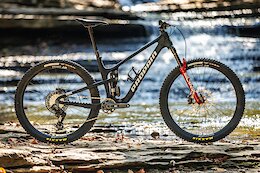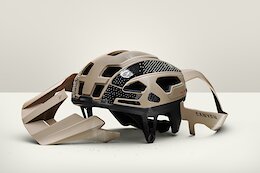Introduction
With SAP Analytics Cloud (SAC), the Designer and Developer has a ton of flexibility and features at their disposal when creating stories. However, it is important to consider the impact these complex stories could have on User Experience and Performance within Mobile Devices.
Within this Blog Post we will highlight some of the Best Practices Guidelines for Designers & Developers to reference when creating stories for Mobile consumption.
Best Practices
For a smooth and user-friendly experience there are a few Best Practices Guidelines that can be referenced by Designers and Developers. It can be categorized in three sections:
Understanding the Mobile Hardware SpecificationsSimplification of Stories (Objects and Advanced Features)Test & Validation on Mobile Devices
Understanding the Mobile Hardware Specifications
Designers and Developers should familiarize themselves with the Mobile Hardware Specifications for SAP Analytics Cloud. It is because based on the device that are available throughout the business, there are different Best Practice Guidelines that should be follow. These are some recommended Best Practice Guidelines per Device:
Device RAM Size (for iPad & iPhone) Max Number of Pages (Recommended) Total Unit Weight per Page on iPad (Recommended)Total Unit Weight per Page on iPhone (Recommended)3GB32.52.54GB43.03.06GB54.04.08GB74.54.516GB 105.0N/A
Simplification of Stories (Objects and Advanced Features)
Designers and Developers should understand what information is important to expose to the consumer on Mobile Devices. It is because unlike Laptops, Mobiles have a limited screen size and device memory.
Tip #1 Reduce Overall Complexity of Dashboard
From a convenience point of view, it is very tempting to add all information within a single story. However, it can lead to information overload and complicate the experience on Mobile. It is because the combination of the number of pages and objects could increase the size of the Story which results in an increase in runtime processing.
⚠️ NOTE there are warnings at Design Time when the number of data related widgets and number of pages exceeds the recommended amount.
Limit the Number of Data Related Widgets on a Single Page: it is recommended to distribute these across multiple pages. For the Flow Layout Panel OR Responsive Layout, use can use Responsive Rule Configurations to hide specific widgets per Device.Limited the Number of Story Pages: it is recommended to also limit the number of pages that existing within a Story. Instead, create smaller stories and leverage the Story to Story Hyperlink to navigate between stories.
Tip #2 Limit the Number of “Expensive” Visualizations
Given that Mobile has less memory in comparison to Web and the amount of memory available varies per Mobile Device, it is important to limit the number of memory intensive widgets. You can find more information on the unit weight per widget type within the SAP Help Portal.
For example, these are some of the expensive widgets:
Geographical VisualizationsTableTimeseries ChartCustom Widgets
⚠️ NOTE for Geographical Visualizations there is a further recommendation where there should be at most one Geographical Visualization per page and within that visualization, limit the number of layers to three.
⚠️ NOTE the number of Filters that existing within a Story could impact the performance on Mobile
Tip #3 Limit the Use of Complex Scripts
With the Optimized Experience, there are a number of APIs that are available. It enables the Developer to create custom applications or workflows that are not available out of the box. It means that inefficient scripts or complex scripts will have an impact on the Mobile experience as it will increase the processing load and crash on Mobile devices.
Test and Validation on Various Mobile Devices
⚠️ NOTE the tips that are mentioned above are Best Practice Guidelines. It is important to validate the experience per Mobile Device as the available member varies.
Tip #1 – Preview & Test
Device Preview in stories is a great tool to use to validate the look and feel of the story across multiple devices. However, it is crucial to preview and test on physical devices to ensure that it is responsive and user-friendly.
Tip #2 – Performance & Memory Validation
It is an extension of Tip #1. However, it focuses more on extensively using the story across multiple devices (i..e 3, 4, 6, 8+ GB RAM). It provides an extra insurance that users will not experience an out of memory issue
Conclusion
With these Best Practice Guidelines, Designers & Developers will be able to optimize their stories for Mobile use, ensuring a smooth and user-friendly experience.
With the 2024 Q4 QRC release of SAP Analytics Cloud, SAC Mobile iOS App will also leverage the Lite Viewer for compatible stories which will help reduce the run-time memory consumption when opening a story on Mobile Devices.
Introduction With SAP Analytics Cloud (SAC), the Designer and Developer has a ton of flexibility and features at their disposal when creating stories. However, it is important to consider the impact these complex stories could have on User Experience and Performance within Mobile Devices.Within this Blog Post we will highlight some of the Best Practices Guidelines for Designers & Developers to reference when creating stories for Mobile consumption. Best Practices For a smooth and user-friendly experience there are a few Best Practices Guidelines that can be referenced by Designers and Developers. It can be categorized in three sections:Understanding the Mobile Hardware SpecificationsSimplification of Stories (Objects and Advanced Features)Test & Validation on Mobile Devices Understanding the Mobile Hardware SpecificationsDesigners and Developers should familiarize themselves with the Mobile Hardware Specifications for SAP Analytics Cloud. It is because based on the device that are available throughout the business, there are different Best Practice Guidelines that should be follow. These are some recommended Best Practice Guidelines per Device: Device RAM Size (for iPad & iPhone) Max Number of Pages (Recommended) Total Unit Weight per Page on iPad (Recommended)Total Unit Weight per Page on iPhone (Recommended)3GB32.52.54GB43.03.06GB54.04.08GB74.54.516GB 105.0N/A Simplification of Stories (Objects and Advanced Features) Designers and Developers should understand what information is important to expose to the consumer on Mobile Devices. It is because unlike Laptops, Mobiles have a limited screen size and device memory.Tip #1 Reduce Overall Complexity of DashboardFrom a convenience point of view, it is very tempting to add all information within a single story. However, it can lead to information overload and complicate the experience on Mobile. It is because the combination of the number of pages and objects could increase the size of the Story which results in an increase in runtime processing.⚠️ NOTE there are warnings at Design Time when the number of data related widgets and number of pages exceeds the recommended amount. Limit the Number of Data Related Widgets on a Single Page: it is recommended to distribute these across multiple pages. For the Flow Layout Panel OR Responsive Layout, use can use Responsive Rule Configurations to hide specific widgets per Device.Limited the Number of Story Pages: it is recommended to also limit the number of pages that existing within a Story. Instead, create smaller stories and leverage the Story to Story Hyperlink to navigate between stories. Tip #2 Limit the Number of “Expensive” VisualizationsGiven that Mobile has less memory in comparison to Web and the amount of memory available varies per Mobile Device, it is important to limit the number of memory intensive widgets. You can find more information on the unit weight per widget type within the SAP Help Portal.For example, these are some of the expensive widgets:Geographical VisualizationsTableTimeseries ChartCustom Widgets ⚠️ NOTE for Geographical Visualizations there is a further recommendation where there should be at most one Geographical Visualization per page and within that visualization, limit the number of layers to three. ⚠️ NOTE the number of Filters that existing within a Story could impact the performance on MobileTip #3 Limit the Use of Complex ScriptsWith the Optimized Experience, there are a number of APIs that are available. It enables the Developer to create custom applications or workflows that are not available out of the box. It means that inefficient scripts or complex scripts will have an impact on the Mobile experience as it will increase the processing load and crash on Mobile devices. Test and Validation on Various Mobile Devices⚠️ NOTE the tips that are mentioned above are Best Practice Guidelines. It is important to validate the experience per Mobile Device as the available member varies.Tip #1 – Preview & TestDevice Preview in stories is a great tool to use to validate the look and feel of the story across multiple devices. However, it is crucial to preview and test on physical devices to ensure that it is responsive and user-friendly.Tip #2 – Performance & Memory ValidationIt is an extension of Tip #1. However, it focuses more on extensively using the story across multiple devices (i..e 3, 4, 6, 8+ GB RAM). It provides an extra insurance that users will not experience an out of memory issue Conclusion With these Best Practice Guidelines, Designers & Developers will be able to optimize their stories for Mobile use, ensuring a smooth and user-friendly experience. With the 2024 Q4 QRC release of SAP Analytics Cloud, SAC Mobile iOS App will also leverage the Lite Viewer for compatible stories which will help reduce the run-time memory consumption when opening a story on Mobile Devices. Read More Technology Blogs by SAP articles
#SAP
#SAPTechnologyblog










